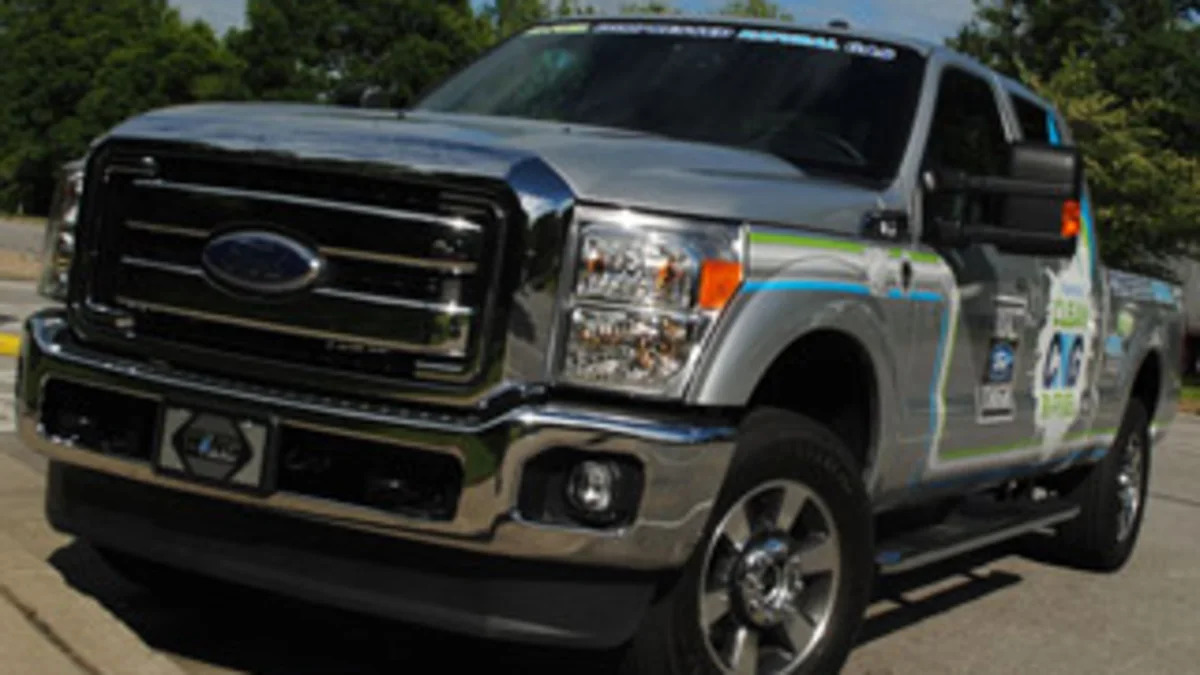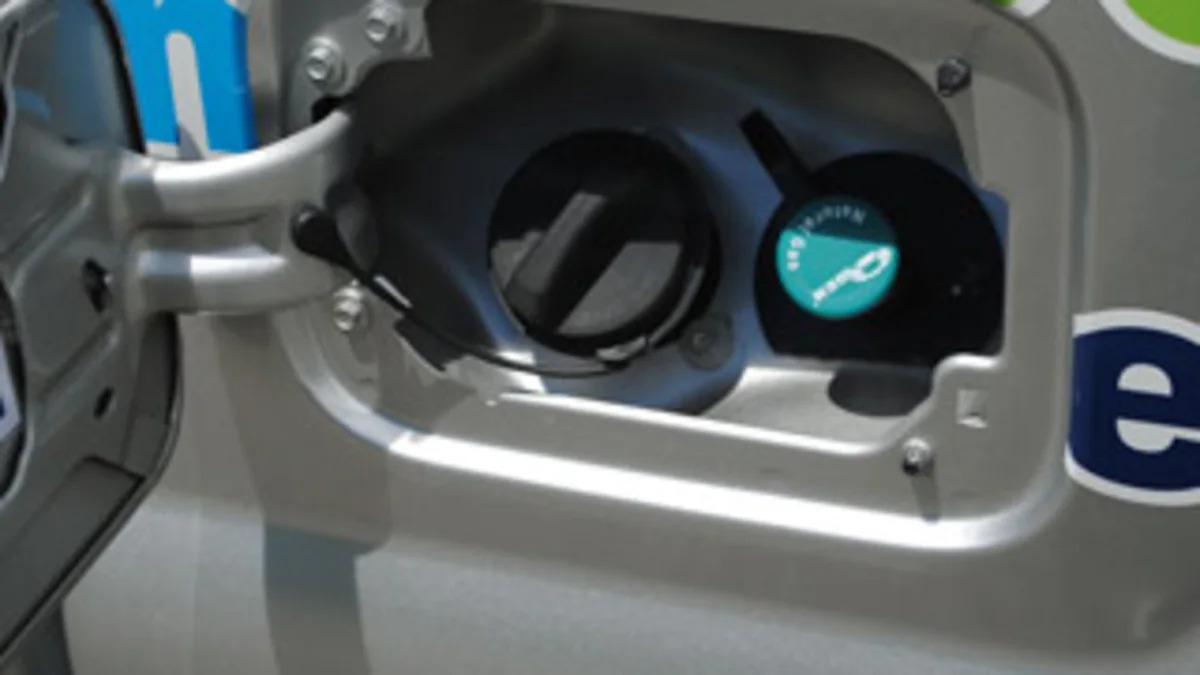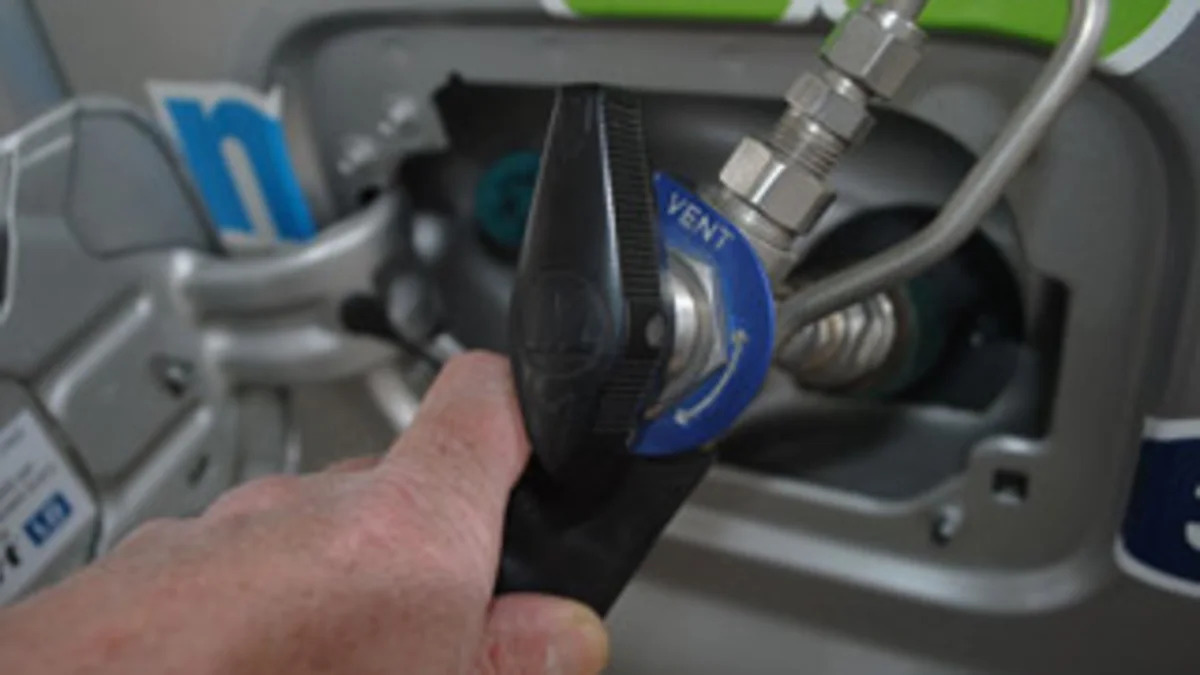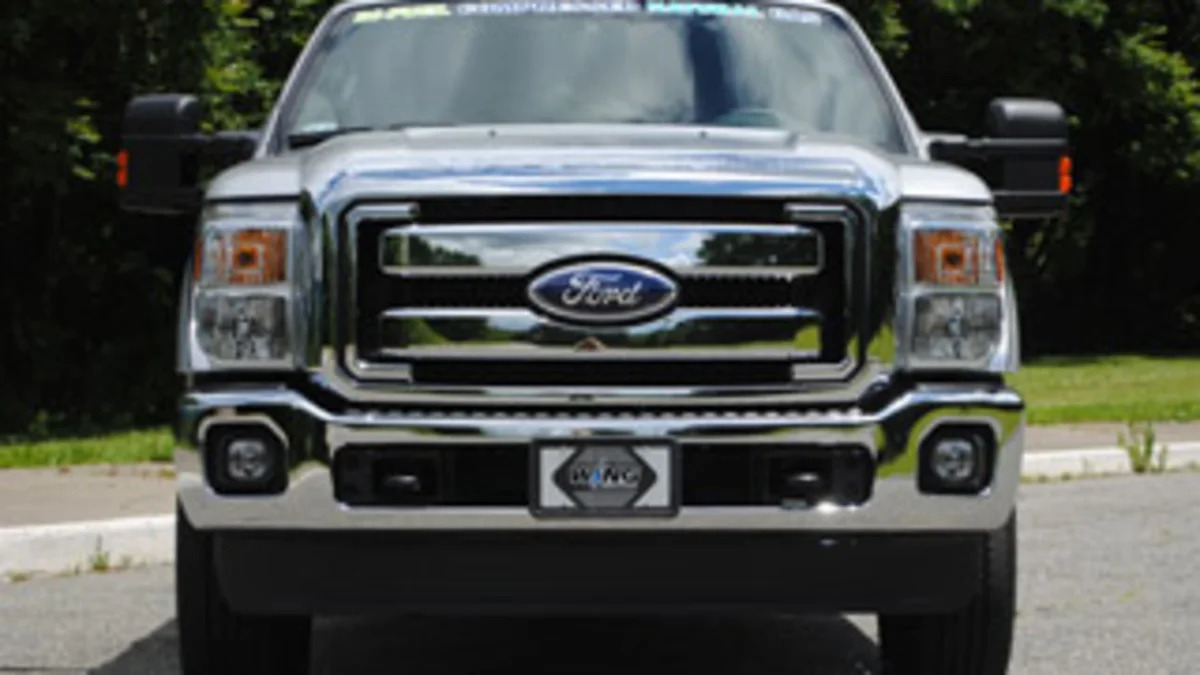Can Natural Gas Save America's Highways?
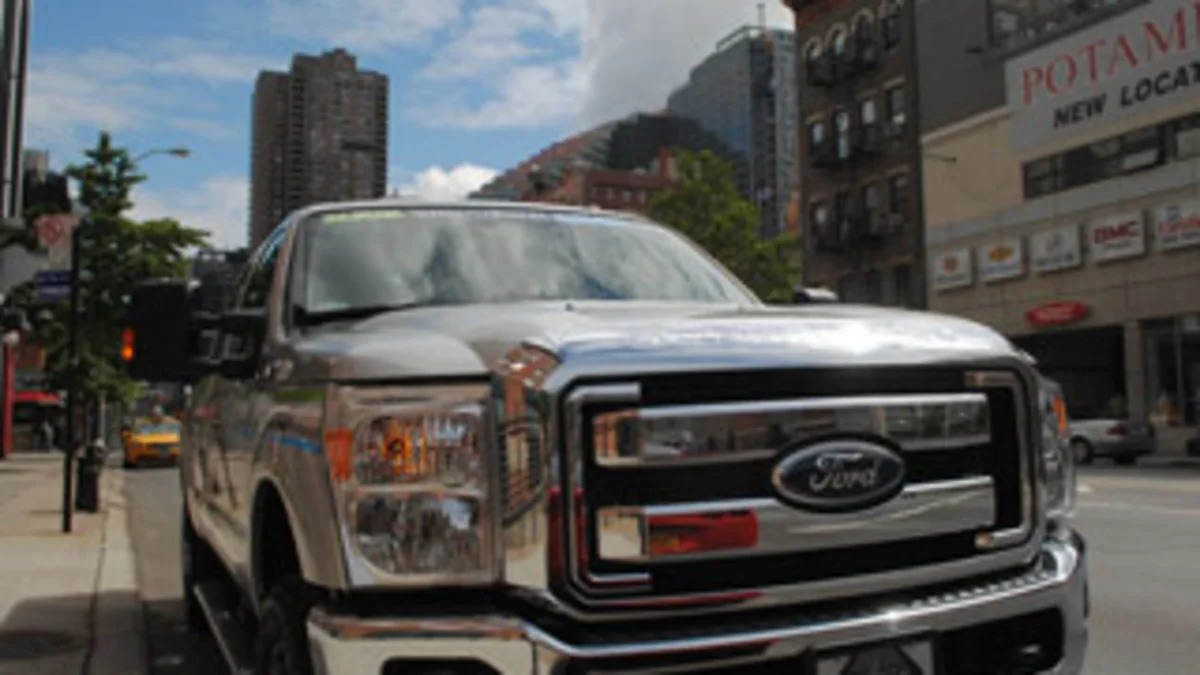
-

The goal was pretty straightforward.
Drive from New York City to Detroit – just more than 600 miles – in a Ford F-250 and not use a single drop of gas; well, at least not of the unnatural kind most people put in their tank.
No, this big rig, which looked like a giant Ford billboard, would be powered by compressed natural gas.
CNG is all the rage again. Carmakers are looking for alternative ways to provide transportation that is cheaper, cleaner but still provides the same kind of power people need. According to the federal government, 87 percent of natural gas is produced in the U.S., it emits up to 40 percent less greenhouse gases, and has up to 90 percent less smog-producing pollutants.
And other than all of the stickers on this particular truck, it looked like any other F-250. The only difference was about 30 percent of the bed was taken up with a tank that could hold 3,600 pounds of CNG. -
CNG Already Here
The beauty of any CNG vehicle is it operates nearly exactly the same way as their gas counterparts. CNG's are going to play a role in keeping internal combustion engines driving this nation 50 years from now. Sorry all of you electric fans – there's not going to be 1 million EVs on U.S. roads by 2015 or even 2020. Your time is coming, but not for a while.
But CNG hasn't only arrived, it's already been here and the energy equivalent to a gallon of unleaded ranges is half, ranging in price from $1.70 to $2.20. -
Problems Persist
But CNG on the highway remains much like the cast of Saturday Night Live: Not ready for prime time.
When I drove the CNG Civic in the past, I learned quickly about range anxiety. It's a true physical phenomenon where you watch the fuel gauge drop and your stomach churns as you try to remember that one Detroit station with a CNG pump. The only backup the Civic comes with is your cell phone to call a tow truck.
Fortunately, this F-250 runs on both CNG and regular gas. It switches so seamlessly from one to the other, I could never pinpoint which fuel I was running at any given time.
In order to use only CNG, I figured I could stop every couple hundred miles, fill up and be on my way. I downloaded two apps – CNG Fuel Finder and Alternative Fuel Locations – for my iPhone and thought this might help keep my stomach settled. Had my truck been in a pure CNG vehicle, those apps would have given me an ulcer.
I plotted my route to and then failed miserably. It wasn't me, it wasn't the truck, it wasn't even the inaccurate or unworkable apps. It was Interstate 80. -
The Open Road
The F-250, it remains a great truck no matter what fuel powers it.
It's big, but drives small. Even through New York City's streets, it maneuvered well, weaving through traffic. At a few points, I think the truck's size gave me an advantage, allowing me to nose into a lane, intimidating a New York City driver.
The high riding position was also advantageous, providing me a chance to see past just the car in front of me. Making my way out of the City, I quickly found myself on Interstate 80. My CNG tank was about three-quarters full. As I drove through the Lincoln Tunnel, I wondered if my truck was even allowed in there. I didn't stop to ask.
Along the open highway, even with the bed empty, the F-250 offers an excellent ride. Some pickups need a couple of pounds in the bed to smooth out the taut suspension, but the F-250 seemed right at home empty.
Additionally, the CNG Lariat model provides all of the creature comforts of most luxury cars. The only thing I'd suggest is providing a navigation system that locates real CNG fueling stations to make the ride complete. -
At The Pump
No one likes something different, and filling up with CNG is different. The nozzle has to lock onto the tank, which is a small nozzle right next to the gas tank cap. Then, when you pull down the handle, there's a big whooshing sound that surprised me.
Other than that, it was absolutely normal. And that's one reason America could convert to CNG so quickly.
Fill-up time is only a few minutes and process. Walk in, tell the cashier you want to fill up on pump 15 and then whoosh. -
The Final Leg Home
The CNG wasn't going to last much longer, and as far as I could tell, Toledo is CNG pump free, so I'd have to finish this trip the traditional way.
So I cruised on down those country roads of Ohio. Past barns and corn fields and the occasional cow as the shadows grew longer and the sun redder. The F-250 looked right at home along these roads, as I passed an occasional pickup heading the other way.
Eventually, those very same trucks my have a 3,600 PSI tank in their beds as well, I thought. It's the one alternative fuel that makes sense for things like pickups, which need power for all of the heavy lifting they do. And curtailing their emissions can lead to a much bigger impact on the environment.
All told, my trip of 654 miles burned through 16.6 gallons of gas, as well as $50 worth of CNG. The total trip costs about $100, which is still much less than a plane ticket, and there was no charge for my checked bag.
America still has a lot of infrastructure work to do if it wants CNG vehicles to make a real impact. But until then, natural gas vehicles will remain a quirky way to power a vehicle. Right now, it's not a serious mode of transportation.
But it will be, no doubt. It will be soon.
